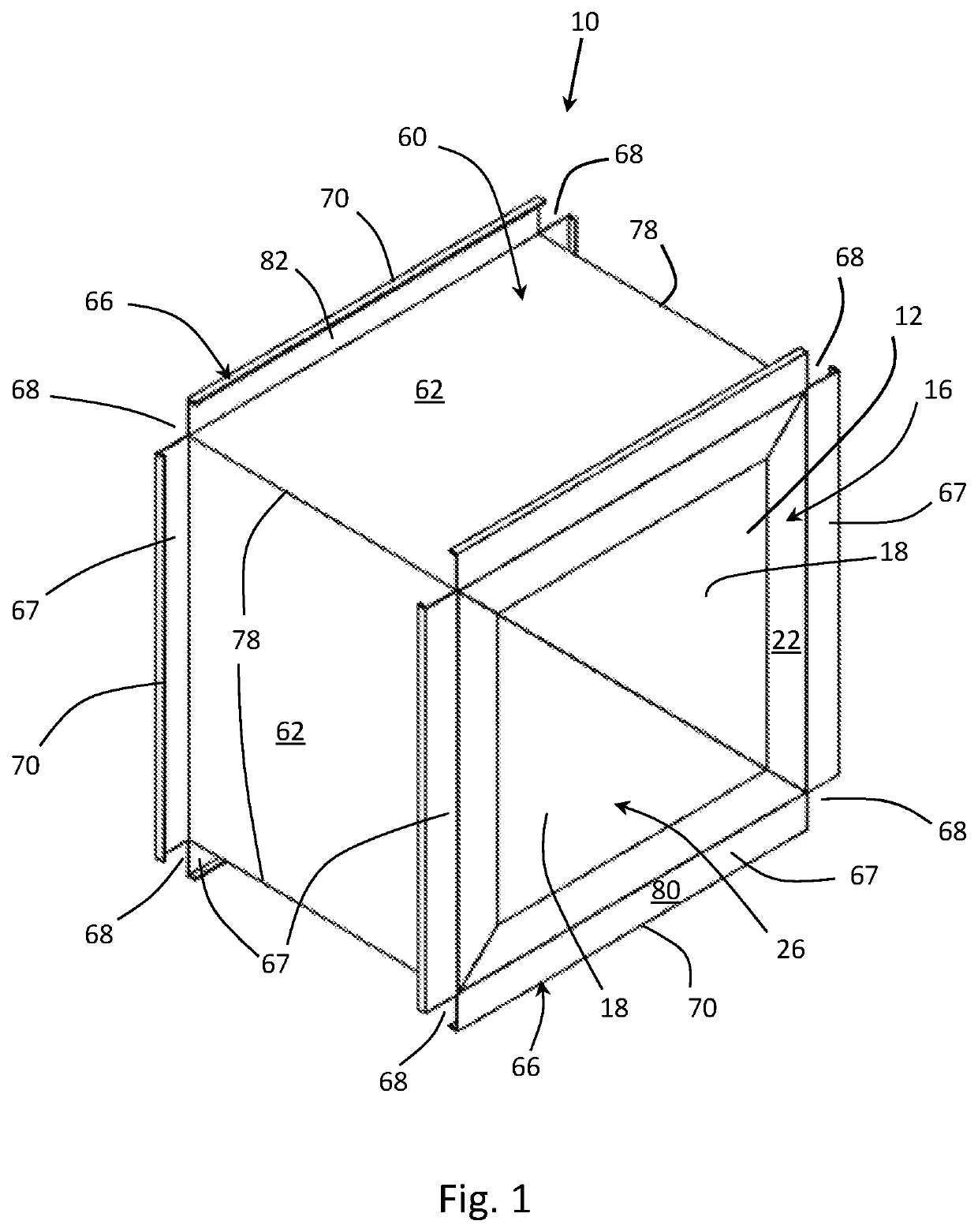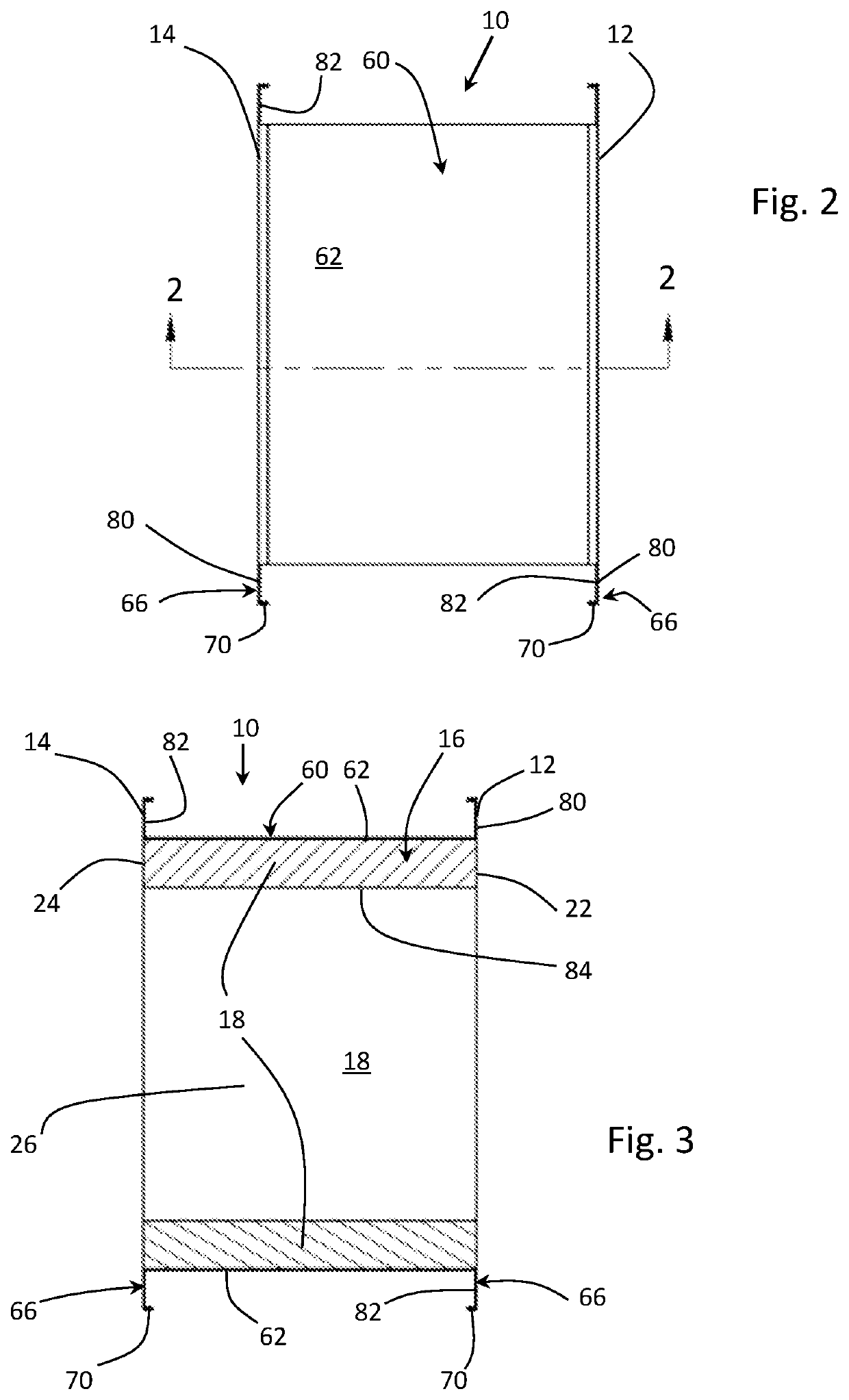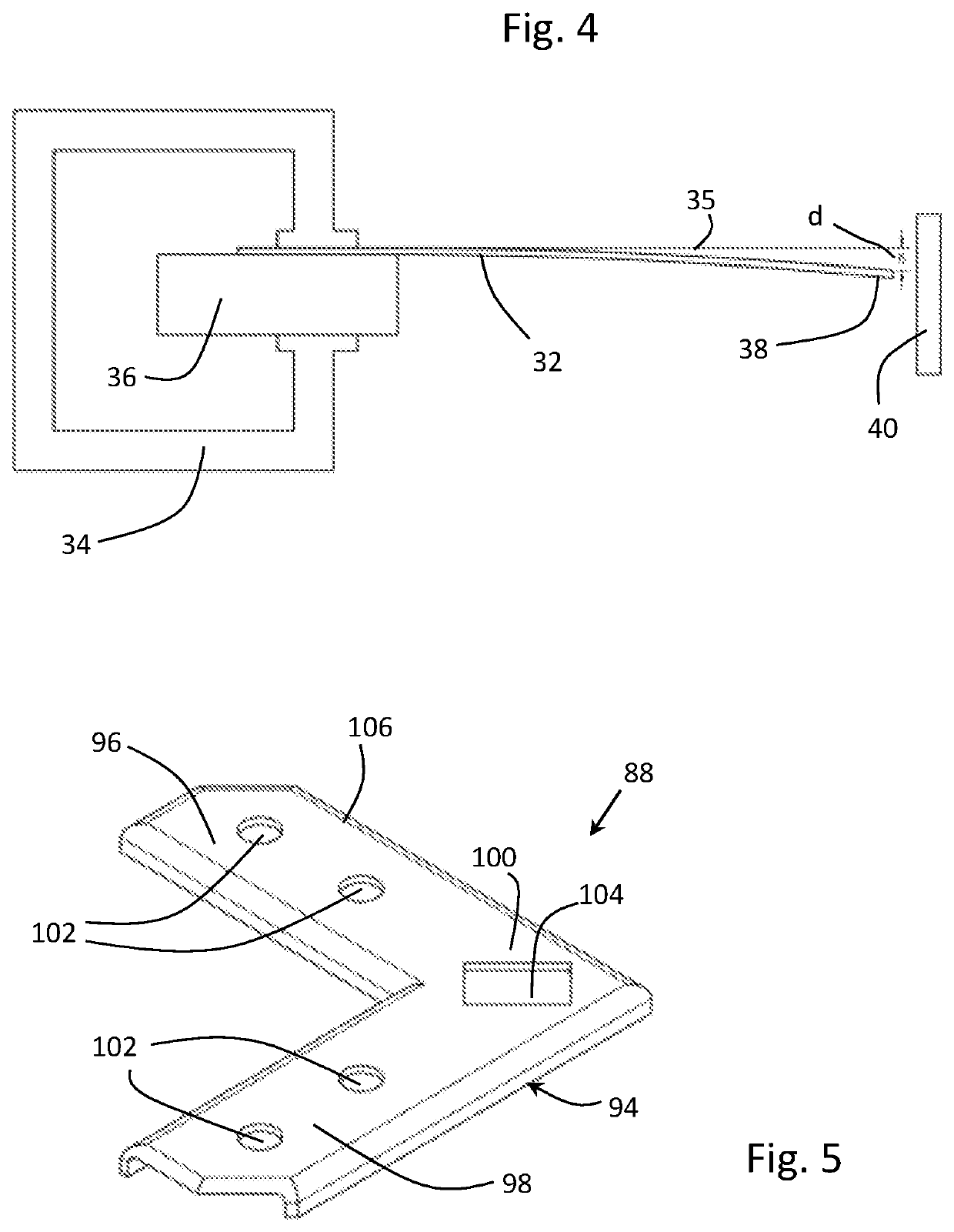Foam core duct system protected by metal sleeves with integral flanges
a duct system and foam core technology, applied in the direction of ducting arrangements, lighting and heating apparatus, heating types, etc., can solve the problems of increasing the risk of moisture intrusion, and increasing the risk of duct body penetration, etc., to achieve cost-effective, high-durability, and easy and more cost-effective manufacturing
- Summary
- Abstract
- Description
- Claims
- Application Information
AI Technical Summary
Benefits of technology
Problems solved by technology
Method used
Image
Examples
Embodiment Construction
[0055]An exemplary embodiment of a duct section 10 of the present invention is shown in FIGS. 1 to 3. Duct section 10 generally extends from a first end 12 to a second end 14 and includes a foam body 16 and an external rigid sleeve 60. Foam body 16 includes side panels 18 defining a central duct 26 through which a fluid such as HVAC air flows when duct section 10 is installed as a component in an HVAC duct system. In many embodiments, side panels 18 are generally made from rigid foam panels having a thickness in the range from 0.5 inches to about 4 inches, preferably 1 inch to about 3 inches, more preferably about 1 inch to about 2 inches. The thickness of the side panels 18 provide foam body 16 with a first end face 22 and a second end face 24 that generally are co-extensive with first end 12 and second end 14. The thickness of the side panels 18 helps to provide duct section 10 with overall rigidity and strength while still allowing duct section 10 to be lightweight. The thickness...
PUM
 Login to View More
Login to View More Abstract
Description
Claims
Application Information
 Login to View More
Login to View More - R&D
- Intellectual Property
- Life Sciences
- Materials
- Tech Scout
- Unparalleled Data Quality
- Higher Quality Content
- 60% Fewer Hallucinations
Browse by: Latest US Patents, China's latest patents, Technical Efficacy Thesaurus, Application Domain, Technology Topic, Popular Technical Reports.
© 2025 PatSnap. All rights reserved.Legal|Privacy policy|Modern Slavery Act Transparency Statement|Sitemap|About US| Contact US: help@patsnap.com



